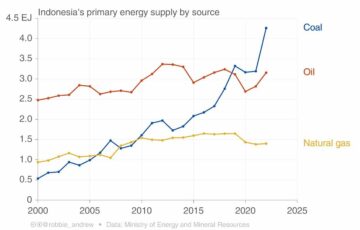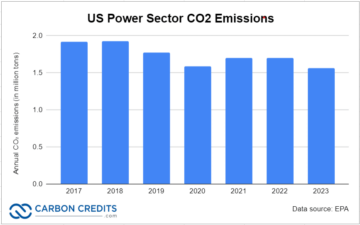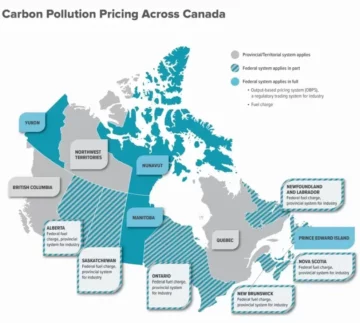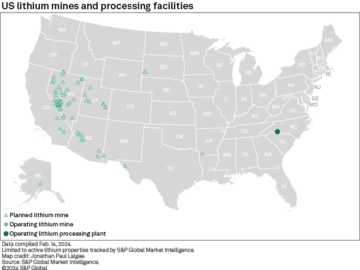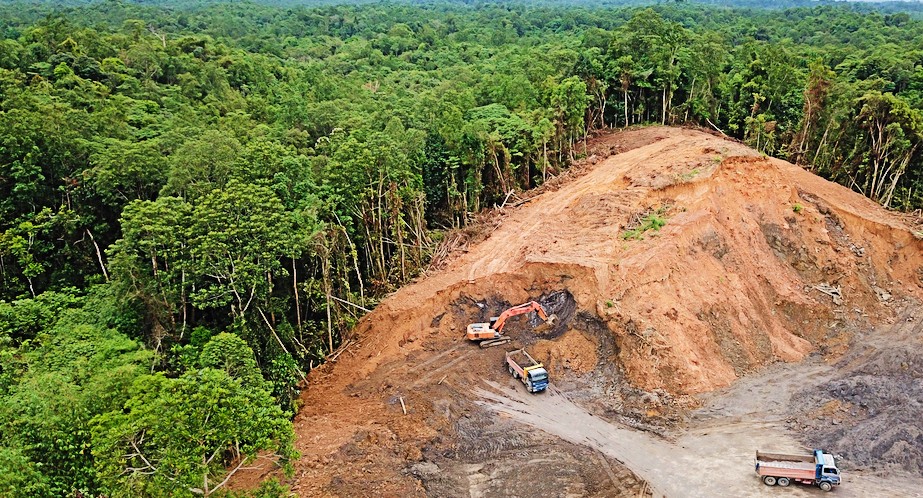
The recent scandals in the carbon markets show that just like other markets with contested reputations, rules are needed that go beyond certification.
There should be several things in place to get the carbon market functioning right and fit for its purpose, particularly a strong international governance framework.
Problems Plaguing the Carbon Market
The reason why carbon credit markets exist is so simple yet compelling. If polluters must pay for their carbon emissions, they’ll have a good reason to pollute less. All the while, more money will go toward activities that avoid, remove, and reduce emissions.
However, if the analysis is true that a large chunk of certified carbon offset credits is of poor quality, the logic behind carbon credits fails.
Journalists said that up to 90% of the carbon credits that the largest certifier, Verra, approves are ghosts. That means they’re not really representing the actual reductions of carbon they claim to do.
The scandal shook the market. Yet, it is not surprising because of the current design of the voluntary carbon markets (VCMs). But given the high relevance of carbon credits in corporate net zero targets, the finding, if it’s true, isn’t a good sign of climate actions.
Another problem that is shaking the market is the rise of the so-called “carbon cowboys”. They are the middlemen working in poorly governed carbon markets who are paying offset project developers and communities in the Global South less than what they deserve. They then sell the credits with a big margin to their buyers in developed countries.
- As such, intermediaries – brokers, retailers, or carbon cowboy dealers – have been under a watchful eye.
A watchdog group reported that 90% of the intermediaries don’t reveal the exact fees or profits they earned from selling carbon credits on the VCM.
This lack of transparency in the financial transactions in the carbon market is alarming. It doesn’t give the key players true insight if the sector is really successful in financing climate actions.
The Root Cause
The environmentalists or climate activists, or whatever they’re called, argue that a market-based approach is designed to fail. That’s because it allows businesses to strike out carbon from their balance sheets by buying offset credits without actually cutting their own emissions.
The critics, thus, think that companies were able to prevent public and political pressure to change their business-as-usual operations. As such, their decarbonization slows down.
While they think it that way, the real cause of problems confronting the carbon credits scheme is not because it is market-based. It is the lack of robust governance that ensures that carbon markets deliver on their proclaimed purpose.
In fact, other sectors such as finance have strict rules to ensure the accountability of market players. In particular, they don’t only regulate product quality but also have price rules to follow.
On the contrary, the VCM depends solely on private certification programs validating that a certain amount of carbon has been avoided or removed from the atmosphere.
Certification of carbon offset credits is definitely crucial. Without it, issuance of the credits won’t be possible. But it should be supported on top by a broader governance framework.
In other words, carbon emissions should not be left primarily in the governing hands of voluntary, certification-based systems. And that is what the current direction of the VCMs seems to point towards.
-
There are plenty of efforts being done to strengthen the governance of the VCM, both on the national and international fronts.
For example, the Integrity Council for the Voluntary Carbon Market (ICVCM) is set to finalize the release of its CCP or the Core Carbon Principles for high-quality carbon credits. CCPs are a set of criteria ensuring that carbon credits bought to offset emissions have a real, verifiable climate impact. And that’s based on solid science, not speculations.
Likewise, the Taskforce on Nature Markets is proposing the robust governance of all nature markets, including carbon markets.
What needs to improve is the pace and impact of these carbon market governance initiatives.
Getting both the carbon and biodiversity credit markets to the right path is critical to meeting global climate and development goals. If they remain flawed, those goals won’t be a reality.
What Needs to be Done
Fortunately, it’s possible to make the carbon credit, as well as the biodiversity credit markets effective. It needs progress in several areas.
High-level transparency and accountability
Transparency and accountability should be on the highest levels for everybody to know what is exactly going on in the market. Accreditation for carbon credit traders is desirable while phasing out the carbon cowboys.
Also, visibility for stakeholders is vital, especially for those who are affected by market activities such as the Indigenous Peoples or local communities. Getting their participation and voices heard will help bring out quality signals to the market.
Doing so can also help discourage the flow of poor-quality carbon credits that’s lowering trust in the VCM.
Digital tools such as smart contracts can help speed up progress, especially when it comes to boosting transparency and accountability.
Minimum price floors
Setting carbon price floors is relevant to rule out questionable offset credits and dealers. Plus, it will promote the desirability of high-quality credits that result in more equitable outcomes. This is particularly applicable to local communities, IPs, and the Global South.
International governance framework
Though principles and guidelines help in advancing climate actions, they’re simply not enough.
There must be a robust international governance structure that will root out rogue carbon credit brokers and traders. It’s also critical to regulate markets and deals that don’t follow the minimum standards for carbon trading.
With all these elements in place, creating solutions, carrying out programs, and scaling up climate initiatives won’t be disputable. They should draw on current efforts and platforms in the VCM, bringing together every player for a more transparent, accountable, and credible market-based approach to fighting climate change.
- SEO Powered Content & PR Distribution. Get Amplified Today.
- Platoblockchain. Web3 Metaverse Intelligence. Knowledge Amplified. Access Here.
- Source: https://carboncredits.com/inside-carbon-markets-problems-causes-and-potential-solutions/
- 1
- a
- Able
- accountability
- accreditation
- actions
- activists
- activities
- actually
- All
- allows
- amount
- analysis
- and
- applicable
- approach
- areas
- argue
- Atmosphere
- avoid
- avoided
- Balance
- balance sheets
- based
- because
- behind
- being
- Beyond
- Big
- boosting
- bought
- bring
- Bringing
- broader
- brokers
- businesses
- buyers
- Buying
- called
- carbon
- carbon credits
- carbon emissions
- carbon trading
- carrying
- Cause
- causes
- certain
- Certification
- Certified
- change
- claim
- Climate
- Climate change
- Communities
- Companies
- compelling
- contracts
- contrary
- Core
- Corporate
- Council
- countries
- Creating
- credible
- credit
- Credits
- criteria
- critical
- Critics
- crucial
- Current
- cutting
- Deals
- decarbonization
- definitely
- deliver
- depends
- deserve
- Design
- designed
- developed
- developers
- Development
- direction
- Doesn’t
- Dont
- down
- earned
- Effective
- efforts
- elements
- Emissions
- enough
- ensure
- ensures
- ensuring
- especially
- Every
- exactly
- example
- eye
- FAIL
- fails
- Fees
- fighting
- finalize
- finance
- financial
- financing
- finding
- fit
- flawed
- floors
- flow
- follow
- Framework
- from
- functioning
- get
- getting
- Give
- given
- Global
- Go
- Goals
- going
- good
- governance
- Group
- guidelines
- Hands
- heard
- help
- High
- high-quality
- highest
- HTTPS
- Impact
- improve
- in
- Including
- initiatives
- insight
- integrity
- intermediaries
- International
- issuance
- IT
- Key
- Know
- Lack
- large
- largest
- levels
- local
- make
- Margin
- Market
- Markets
- means
- meeting
- middlemen
- minimum
- money
- more
- National
- Nature
- needed
- needs
- net
- offset
- Operations
- Other
- own
- Pace
- participation
- particular
- particularly
- path
- Pay
- paying
- Place
- Platforms
- plato
- Plato Data Intelligence
- PlatoData
- player
- players
- Plenty
- plus
- Point
- political
- poor
- possible
- potential
- pressure
- prevent
- price
- primarily
- principles
- private
- Problem
- problems
- Product
- Product Quality
- profits
- Programs
- Progress
- project
- promote
- public
- purpose
- quality
- real
- Reality
- reason
- recent
- reduce
- Regulate
- release
- relevance
- relevant
- remain
- remove
- Removed
- Reported
- representing
- Resources
- result
- retailers
- reveal
- Rise
- robust
- root
- Rule
- rules
- Said
- scaling
- Scandal
- scandals
- scheme
- Science
- sector
- Sectors
- seems
- sell
- Selling
- set
- several
- should
- show
- sign
- signals
- Simple
- simply
- slows
- smart
- Smart Contracts
- So
- solid
- Solutions
- South
- speed
- stakeholders
- standards
- Strengthen
- strict
- strike
- strong
- structure
- successful
- such
- Supported
- surprising
- Systems
- targets
- The
- their
- things
- Think
- to
- together
- tools
- top
- toward
- towards
- Traders
- Trading
- Transactions
- Transparency
- transparent
- true
- Trust
- under
- visibility
- vital
- VOICES
- watchdog
- What
- What is
- while
- WHO
- will
- without
- words
- working
- zephyrnet
- zero



